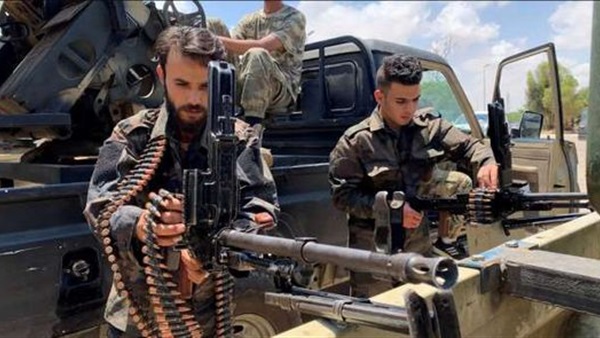Conflict between militias in western Libya exposes GNA’s security failure

The escalation of clashes between militias loyal to the
Government of National Accord (GNA) in western Libya has led to the emergence
of a state of division, highlighting the reality of the deteriorating security
situation in light of a struggle for influence amid the GNA’s impotence. This
comes as local and international efforts continue aiming to reach a
comprehensive political settlement to end the Libyan conflict.
Clashes continue
Clashes renewed in the middle of this week between groups
affiliated with the GNA in Tripoli, as the Tajoura Lions Brigade announced that
it had taken control of the headquarters of the Daman Brigade and expelled its
elements from the region a few days after the outbreak of the conflict between
the two parties, which led to multiple deaths and injuries.
The Tajoura Lions Brigade issued a statement in which it
confirmed that its members had expelled the Daman militia members from the
region after invading the latter’s headquarters, backed by elements of the
Rahbat al-Duru’ militia led by Bashir Khalafallah, known as al-Bugra. Tajoura
Lions leader Mohammed Mansour al-Waer called on the members of the Daman
Brigade to leave their weapons and go to their homes, after he described them
as having “clean hands and not involved in suspicious acts of theft and
extortion.”
Meanwhile, other clashes erupted between a Zintan militia and
a militia from Zawiya on a road west of Tripoli, with the use of heavy weapons,
which caused terror to civilians after shells fell in residential neighborhoods
and caused huge explosions.
The United Nations Support Mission in Libya condemned the
clashes and called for an “immediate cessation” of hostilities in the capital,
Tripoli. It added in a statement that it is “following with great concern the
clashes with heavy weapons between two armed groups in the residential
neighborhood of Tajoura in Tripoli, which resulted in damage to private
property and endangered the lives of civilians.”
Security gap
The resumption of clashes between militias in western Libya
clearly revealed the inability of the GNA to curb the power of the militias,
which are considered the ultimate in command in Libya’s western region, especially
in Tripoli.
Observers believe that the militias depend on Fayez
al-Sarraj’s GNA to legitimize their existence, as this government is nothing
but an umbrella for armed groups that it considers the basis of its military
and security forces.
The clashes prompted residents to protest against the
deteriorating security and living conditions there, and they closed the streets
of Tajoura with dirt and stone mounds, which prompted the GNA Defense Minister Salah
Eddine al-Namrush to announce the dissolution of the Daman and Tajoura Lions
brigades and refer their leaders to the military prosecutor for an
investigation into the clashes.
Informed sources quoted Namrush as saying, “We gave
instructions to use force against the conflicting parties if the shooting did
not stop immediately.”
Meanwhile, political efforts continue towards reaching a
consensus between the parties, with the resumption of the second round of
negotiations in Bouznika, Morocco after being stalled for several days.
The two negotiating Libyan delegations ended the second
round of negotiations on Saturday, October 3, amid news of understandings about
the criteria that will be adopted to choose who occupies the sovereign
positions in Libya.





